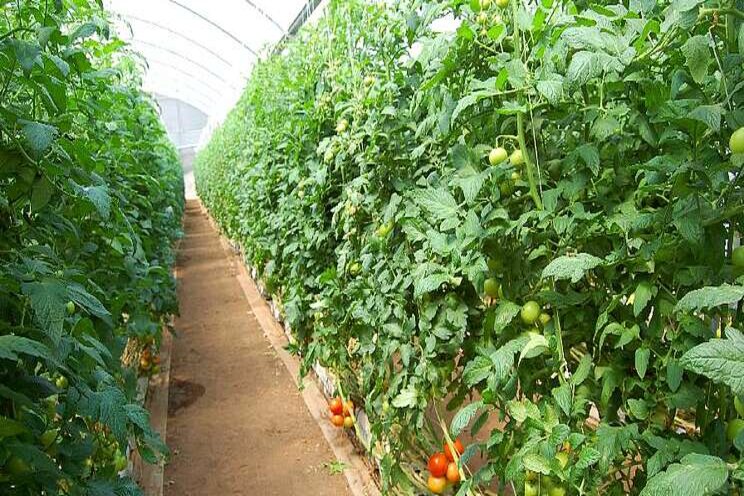Healthy greenhouse, healthy tomatoes
Added on 16 July 2020

Many of the preventive measures below involve humidity control. Where does all this humidity come from? Plants naturally transpire water, which keeps them healthy and cool. Evaporation from all moist surfaces increases humidity as well. Besides making diseases more likely, high humidity also interferes with pollination and, therefore, fruit set.
1. Pay Attention to Plant Population
Crowding tomato plants at a higher density to try to get more yield from the greenhouse will work against you. Aim for 5 square feet per plant.
Adding more plants will reduce the yield per plant, giving you about the same total yield from the greenhouse. However, the quality of the fruit will drop — more fruit that are misshapen, undersized, cracked, rough, or otherwise not marketable. Also, when leaves overlap other leaves, they stay wet, which helps spores germinate and diseases get started.
2. Maintain All Environmental Control Equipment
This includes heaters, exhaust fans, vents, horizontal air flow (HAF) fans, and all components of the fertigation system. HAF fans are especially important in preventing disease since they circulate the internal air, which helps keep leaf, flower, and fruit surfaces dry. Remember, moisture is needed for the disease spores to germinate.
Be sure your heater is vented to the outside, either with a stack through the roof or through the end wall. There are no 100% efficient heaters, unless they are electric. Even if a sales rep tells you they are 100% efficient, meaning there is no exhaust, it is not true.
Burning fuel, whether natural gas, propane, diesel, wood, or any other hydrocarbon, releases carbon monoxide and ethylene in the air. Tomatoes will not tolerate either of these gases from exhaust. A chronic (long-term) exposure of 0.01 to 0.05 ppm ethylene, or an acute (3 hours) exposure of 1 ppm ethylene is all it takes to cause serious damage.
The results are twisted leaves, brown lesions on leaves, and worst of all, flower drop. If you lose flowers, you lose fruit. Be sure to separate exhaust gas from the greenhouse growing space.
3. Get a Handle on Humidity
What if your greenhouse rains? By this, I mean a greenhouse in which the inside of the plastic film drips onto the plants. This indicates a high-humidity problem. If there are no HAF fans, add two or four fans. If there are only two, add two more. When the exhaust fans are off, the HAF fans should be on (or you can leave them on all the time if you prefer). They will help keep surfaces dry.
Another thing that really helps is to drive humidity out first thing in the morning when it is the highest. Turn on the fans and open the vents for a few minutes, even if the temperature is not higher than the set point for the fans. Hot, humid air will blow out and be replaced with dryer, cooler air from outside.
This may trigger the heater to come on when the fans go off. That's OK. The heater will further dry the inside air.
A healthy greenhouse is needed for healthy, productive plants.
Source and Photo Courtesy of Growing Produce
Source: Growing Produce
More news















